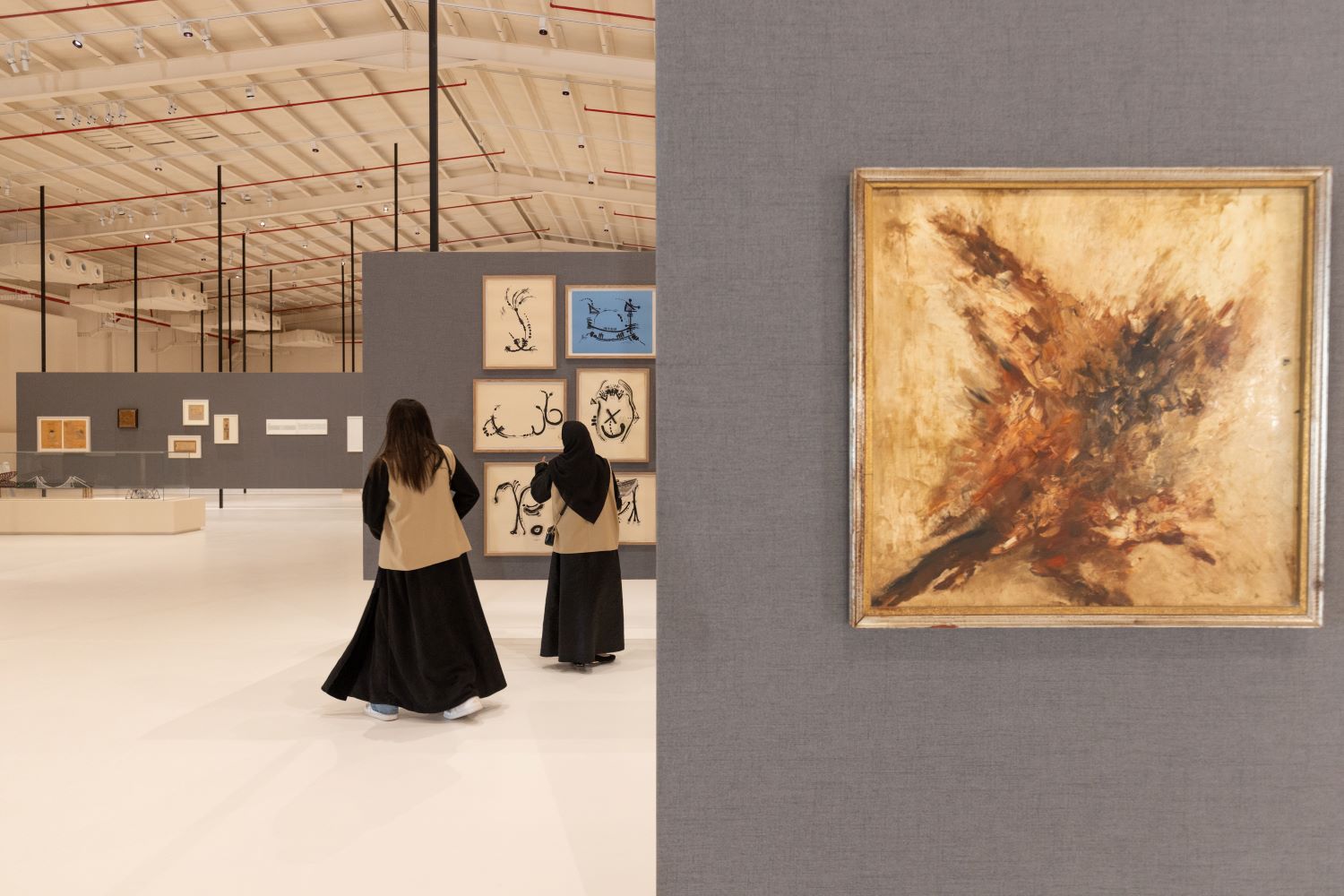‘The Ink of Day’ is the third exhibition by Saudi Arabian artist Hussein Al Mohasen set in the historic XVA Gallery. Walking through rooms laden with Al Mohasen’s works, we are reminded of the tangible experience of poetry and landscape. Each piece puts forth a visual narrative of the transitions of the contemporary between the digital and real, political and social, private and public, and uninterrupted urban and cultural transformations of the Gulf region.
Al Mohasen’s works have always acted as a commentary on the world in which we live, to find a gap within the fabric of society to reflect on it. The pieces included in The Ink of Day both record and participate in the time that they were made. Looking back can help us to understand and appreciate the visual environments which Al Mohasen creates as a series of conversational snapshots.
Al Mohasen uses intense bright colours and intense texture in a lot of his pieces, as if the message that they hold is shouting at us, grabbing our attention. These neon hues cry out to you, willing you to look. This is pivotal to the artist’s voice and includes you in the visual narration of poetic rhythm. The artist has been shaped by poetry from the Arab world, notably Syrian poet Adonis, utilising short lyrical phrases in a graffiti style, translating words into the colourful space.
The title ‘The Ink of Day” has been selected from one of Adonis’ poems “Beginnings of the Body, Ends of the Sea”, reflecting the descriptive element of Al Mohasen’s works. Graffiti has long been used as an accessible form of artistic self-expression, mostly used in an unsolicited, unmonitored way to communicate thoughts anonymously. In this way, graffiti allows messages to be portrayed universally and without context.
‘The Ink of Day” presents these pieces with little context or narrative background so that the audience can attach their own personal meaning to them. The physicality of each message is received in an entirely different way each time. Each piece does not have one singular interpretation but instead reveals a myriad of meaning for each person that it is viewed by. By viewing each piece years after it was created, the interpretation becomes boundless, creating continuous and extended narratives of experience.
In this exhibition, Al Mohasen confronts us with messages that transcend time. We are met with poignant phrases that emanate emotion and history for the artist at the time of creation but can take on new meaning for each viewer. Since each piece’s creation, it seems the world has changed drastically, to the point where sometimes it is unrecognisable. However, by interacting with the voices of the past through Al Mohasen’s work, we can take comfort in the relative similarities of both past and present. Perhaps the world has changed, perhaps you will be forever different because of this, but by using hindsight and messages from the past, one can find solace in navigating the future.





